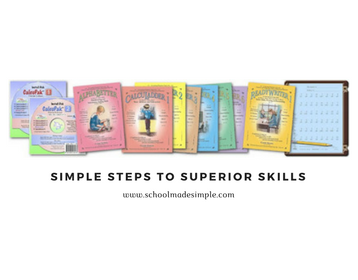by Dr. Edwin C. Myers, Ph.D.
Ed Myers holds his doctorate from Carnegie-Mellon University and the M.A. from Dallas Seminary.
A scientist, educator, and musician, Ed designed the optics of the infrared spectrometers for NASA’s
Voyager I and II space probes. He has taught at the university level and performed geophysical research in the petroleum industry. He authored the world-famous CalcuLadder® math drill series.
He has served multiple terms in elected office as county commissioner. Ed has also authored numerous choral pieces and directed church, festival, community choirs. Ed and his wife, Nellie, are the grateful parents of twelve adult children, all homeschooled from K-12th Grade.
I still remember the evening over 35 years ago when I found out that our oldest son—who was finishing up a second-grade math workbook—couldn’t add:
“Say, Matthew, what’s 7 + 4?”
“Uh, 7 + 4?” Matthew replied. “Let’s see . . . 7, (and his fingers went under the table as he
whispered slowly) 8, 9, 10, 11 . . . 11!”
Almost every problem I asked him went that way. Matthew understood the concept of addition and he could use a concrete procedure (counting fingers) to get the right answer—most of the time— but only after 7 or 8 seconds! Matthew’s experience was a classic example of the limitations of knowledge without know-how.
The Armchair Quarterback
A familiar illustration of knowledge without know-how is the armchair quarterback. A head full of football knowledge, the armchair quarterback can identify all types of football playing formations, quote the rules of the game in detail, recite statistics on dozens of players and teams, and call excellent plays from his TV-side seat.
It is quite another thing, however, to walk onto the playing field and actually EXECUTE a play, brilliant as it may be, that was developed while sitting in an armchair, and most armchair quarterbacks would fail if they tried. Fortunately, however, most of us don’t have to earn our livelihood by playing football, so that our on-the-field playing skills don’t make a great deal of difference in our lives.A familiar illustration of knowledge without know-how is the armchair quarterback. A head full of football knowledge, the armchair quarterback can identify all types of football playing formations, quote the rules of the game in detail, recite statistics on dozens of players and teams, and call excellent plays from his TV-side seat.
There are a number of skills, though, in which we cannot afford to be mere armchair quarterbacks, but in which our practical performance level makes a big difference in our capability as stewards under God. What are some of these skills? And how can we tell when a skill is learned “well enough”?
“Over the Hump” toward Self-Reinforcing Skills
We want our students to get to that delightful point where they “take off and run” with the skills they’ve practiced in the classroom. This happens when students get “over the hump” of their initial awkwardness and slowness, and gain confidence and the realization that their new skills make them more capable and productive.
Many students never get over the hump in certain skills. Unless one gets over the hump, the new skill tends to fall into disuse. A good example of this tendency is the “might-have-been piano player.”
Many of us have perhaps taken lessons on the piano or another musical instrument in the past. We probably recall the unpleasantness of having to practice a skill that simply seemed to rob us of time for doing other activities that we were more comfortable and adept at. If we never got over the hump to where piano playing “paid off” in making an attractive sound for others or ourselves, chances are that we’ve lost much of whatever playing skills we once attained.
Hemmed In by the Hump!
We have seen that there is often an uncomfortable period—a “hump”— in the learning of an unfamiliar skill. During this period, the learner is often aware of his own clumsiness in regard to the skill he’s learning. He may become irritated that the process of learning the new skill leaves him less time for other activities he enjoys.
Finally, he may not appreciate the fact that the new skill, once learned sufficiently, may well open whole new vistas of interest, usefulness, capability, and enjoyment. Indeed, the new skill may make all of his skills sharper and more effective.
In the meantime, though, there’s still that nasty “hump” to get over before clumsiness is replaced by confidence and vexation by adventure. How do we get over the hump?
The Skills Chain – No Stronger than its Weakest Link
Most tasks in which we would like our students to excel involve the use of a whole suite of skills—a “skills chain.” For example, we may casually think that solving the math problem “5 + 2 =” calls for the use of the “addition skill.”
With a little reflection, however, we realize that even this rather basic problem requires competence in several skills in order to be solved successfully. These skills include: visual recognition of the numerals written on the page, mental connection with the values to which the numerals correlate, knowledge of the meaning of the “+” and “=” signs, familiarity with other numbers (like the answer, “7”!) which do not appear in the problem at all, and sufficient verbal or manual skill to say or write the answer.
Now let’s take the long division problem, “628 ÷ 13.” To solve this problem, one must: recognize the numerals and notational marks on the page and their mathematical significance, estimate the various digits of the quotient (a multiplication skill), place them over the correct digits in the dividend (a place-value skill), multiply by the divisor (this may include the “carrying” skills of addition), subtract to find remainders, and so on.
All of the skills used in the “5 + 2” problem are still very much needed in the “628 ÷ 13” problem! Now here’s the rub: a weak link in the skills chain, even a weak “addition” link, will adversely affect our student’s performance in long division.
The general principle is that the quality of our students’ performance in any given task is likely to be limited by the weakest link in the skills chain required for that task. A weak link in the skills chain at any given proficiency level will adversely affect performance at all higher proficiency levels.
What does all this have to do with the skills “humps” we were talking about earlier? Just this: a weak link in the skills chain is nothing other than a skill which has never gotten over the hump! What complicates matters is that we sometimes fail to detect a weak link in our students’ skill chains or a hump in their road to proficiency.
A weak link in the skills chain may not be apparent until we hang a heavy performance “weight” on the chain. Then, when the chain “snaps,” we realize there’s a problem somewhere. For example, a student may habitually resort to mental “finger-counting,” like my son Matthew did when solving simple addition problems like “5 + 2.” We may not think it’s a big deal. Later, though, when he encounters problems like “5 + 2 + 8 + 3 + 6” or “628 ÷ 13,” in which addition skills need to be “second nature,” the addition link that once seemed strong snaps, and our student bogs down and becomes discouraged.
Over the Hump!
So, suppose our student is having trouble in a particular academic area. How do we find the weak links in his or her skills chain? One good way is to back way up and try some activities which should be quite easy, which require only links which our student should have mastered long ago. Lo and behold, we may find that there are some unconquered humps even among those basic skills! Try activities which require successive links, until we notice that our student begins to have trouble.
At this point, we should “drill” our student on the weak links, helping him to get over the hump and strengthen the weak links in his skills chain. Then, gradually add more “weight” and use further links. (Well-designed drills are not overly long or tedious.) Keep the following points in mind:
- Don’t presume that “knowing about” is the same as doing well. We don’t want mere armchair quarterbacks! In the midst of such questions as “Can my child describe it?”, “Can my child give an example of it?”, “Can my child classify it?”, and so on, don’t forget the question, “Can my child DO it?”
- Try to raise the proficiency level of each new skill a bit higher than it “needs” to be at that particular time. As soon as the very next skill is introduced, the previously learned skill will need to function at this higher (i.e., confident, natural, over the hump) level.
- Remember three important phases of “hump hopping”: (1) get the facts down cold, (2) get the procedures down pat, and (3) practice makes permanent.
- Try to cultivate a diagnostic frame of mind as you evaluate your children’s performance. When your kids are having difficulties, ask yourself, “What are the skill ‘links’ that are involved in doing this academic task?”, “Which one of these links seems to be weak?”.
- Give your kids a daily dose of “academic calisthenics.” These can take the form of brief, daily performance drills which focus on factual and procedural, nuts-and-bolts DOING. Drills with goals for both time and accuracy make weak areas stand out like sore thumbs, and provide a great way for student and teacher to measure and recognize skills improvement. One series of such drills is School Made Simple’ Learning Vitamins® series, CalcuLadder®, ReadyWriter®, and AlphaBetter® drills.
- Give your kids opportunities to use their skill in the real world. Let them practice penmanship by addressing envelopes for you; practice reading by reading Bible verses or short news articles to the family; or practice math by adding up a grocery bill from the prices in a store flyer. Practice makes permanent.
- Finally, give your kids the opportunity to meet a performance standard – advancement to higher-level drills is conditioned on successful mastery of earlier drills. In this way, our students can experience the pleasure and gratitude that comes from getting “over the humps” with God’s enablement and provision.
Self-Reinforcement is the Goal
Remember: When our students get over their learning humps, they forge strong skills chains, and begin to sense the opportunities for using their skills with an expectation of success. They begin to use their new skills on their own, gaining practice and polish as they blossom into fuller possession of the abilities that God has given them!
Jamie Gaddy
Jamie Gaddy, B.S., M.Ed., Ed.D. has been a college education professor for over 17 years. Education has been a part of her life in both the classroom and as a principal. Six children later found her dissatisfied with traditional school and homeschool became the better fit. She is also a pastor’s wife, editor, and entrepreneur who now homeschools four of her six children in Georgia. Jamie loves to share about her homeschool experience to help other homeschoolers find success. Connect with her at [email protected].
Latest Posts

Guest Post by Gabriel Morse For several years, I sat for long hours every day behind one of those battleship gray desks in a windowless, dull, gray office. The pay was enough to take care…
Read more >
This post is sponsored by Little Monsters Universe. I'm Tina Salmanowitz, an advocate for homeschooling and science education. With over a decade of experience as a science educator (in class…
Read more >
This post is sponsored by Time4Learning. Before the pandemic, it was business as usual for Boca Raton resident Nikki Warris. Her two daughters, 5-year-old Natalie and 8-year-old Lexi were…
Read more >


